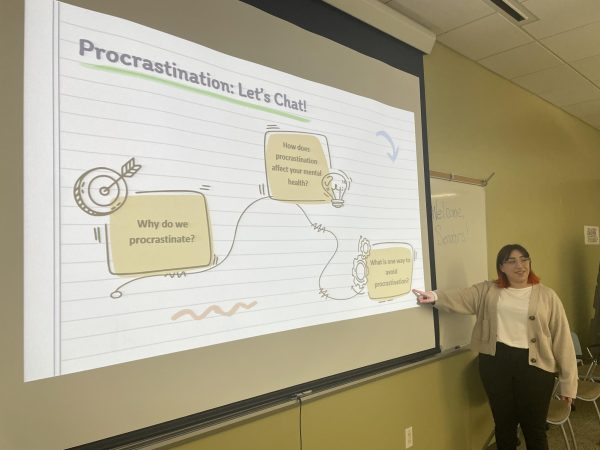Rio alumnus paves his way west
“Go West, where the birds run fast and time runs slow. “Go west, where the stars are bright and the moon is close.”
Joel Nakamura is a successful artist and illustrator, always looking for his next project as he continues to explore new frontiers.
Joel received the 2015 Gelett Burgess Children’s Book Award for best writer and illustrator for “Go West,” his first published children’s book, which takes readers of all ages on a journey West, led by intense, colorful images and Nakamura’s down-to-earth writing style.
The book combines elements of natural New Mexico, folk art and adventurous characters. “I wanted ‘Go West’ to be a metaphor for a frontier of the West, but also a frontier of the imagination,” Joel said.
“The whole idea is about moving to new areas. Back in the old days, they said ‘Go west’ to try to make your fortune, but that’s also a metaphor for blazing your own trail and not (letting) hardships get in the way, and appreciating things of beauty around you that you might take for granted.” Joel said.
Despite his deep knowledge and culturally rich artwork, Joel didn’t grow up in New Mexico. Actually, he was born and raised in Whittier, California.
Joel attended Oceanview Elementary, continued at East Whittier Middle School and went on to California High School.
During his junior year in high school, he began to take night-time art courses at Rio Hondo College. “I had great teachers who helped direct me to be more focused,” he said.
After taking many vacations in New Mexico, Joel and his wife decided to permanently move to Santa Fe. Joel deeply appreciates the unique natural qualities of the small town, “Things like tumbleweeds are fascinating to me. We have these big clouds, this fantastic sky and it’s really blue. Stuff like that, I find fascinating. Since I didn’t grow up with that, I notice it more.”
His admiration of the natural beauty of the Southwest comes through in all of his illustrations in “Go West,” from the minute, highlighted details in the background of each page to the simple and vivid descriptive imagery of the text.
Despite his tremendous success, Joel has humble beginnings. Throughout his childhood, he was always exposed to art.
“My parents were always taking us to art museums and cultural events. We didn’t have money to buy extravagant things, but we had money for travel. We didn’t get the newest toys, but we always had art supplies in the house so I would make my own toys out of egg cartons and telephone cables,” he said. “It forced me to be really creative.”
Joel’s exposure to traveling the world helped to nurture a broader perspective. “I remember in art history class, they would show slides of places and I would think ‘Hey, I’ve been there and have seen that (in person).’ It really gave me a lot of exposure to things that other kids my age didn’t have yet.”
Naturally, Joel’s parents, Yosh and Grace, are proud of him. From the opening and closing ceremony programs for the 2002 Olympics in Salt Lake City to the billboard ad in front of Rio Hondo College on the 605 Freeway, Joel works all over the country and the world and his works are recognized internationally.
“He also did Corona beer trucks. The truck drivers even wrote him fan mail because they never had so many women approaching their trucks just to look at his work,” Yosh said. “Joel has also designed a campaign for Nike shoes in both English and Spanish.”
Yosh and Grace can’t seem to go anywhere without seeing their son’s work in one form or another, whether it’s in a flight magazine or pharmaceutical ad campaign.
“I went to buy silk underwear at Big 5 because we were visiting him New Mexico. I was looking at the men’s silk underwear,” Grace said. When she saw the design of the packaging, she called Joel and asked, “ ‘Did you do that?’ and he said ‘yes’.”
Joel’s style is very unique, in that ”He not only has main images, but in the background, if you look carefully, you can look at the work over and over and over, because you’ll see a lot of small imagery and new things, every time,” Grace said.
Joel admits his style is predominantly imagination-based, even though he does feature some aspects of reality throughout. “It’s all pretty bizarre stuff. Everything is pretty symbolic and imaginative. It’s stuff I was always drawn to as a child. The kind of art that influenced me was always more symbolic, tribal, primitive, colorful, kind of being a vehicle for all this influence to come out. Sometimes I really don’t know where it comes from. It just shows up.” he said.
Born into a family of artists, Joel developed his artistic skills from a young age. Both Yosh and Grace have had their art featured in exhibitions. Joel’s brother, Daniel is an origami artist while his sister, Linda, is a photographer and writer.
“They couldn’t avoid art in our family,” Grace laughed, “We suffer from art-attacks and art-ritis!”
Joel initially didn’t think much about making art a career, but experienced his “aha moment” one day in his room, listening to records and looking at the album covers, when his Uncle Larry told him, “You know, there are people who do that. They are illustrators.” Joel decided then that he wanted to be an illustrator.
After he graduated, CDs replaced the popularity of records, but he was still able to design some record covers and fulfill his prophesy.
Yosh and Grace always supported their children and the open-minded environment nurtured Joel’s and his siblings’ creativity. “They were very independent people. They wouldn’t take our advice (even if we gave it),” Yosh said. “They search out their own paths. We are there to support them, but didn’t discourage them from doing whatever pursuit they had.”
True to his story about exploring new areas, Joel advises those searching to “slowly follow what you’re good at, what you know about, what you like doing, so your work doesn’t feel like work. (It would be) what you’d be doing for play, but you’d get paid for it.
“I think that’s the ultimate situation for everybody. Like professional athletes who get paid to play football. If you can earn your living by doing what you enjoy, your work isn’t really work. So I’ve been really fortunate to be able to do this and it’s been really fun and rewarding at the same time.
Though he’s accomplished so much, Joel maintains a modest attitude. “You do the project and you move onto the next project. You don’t focus on “I did that.’ After a while, you accumulate a pretty good resume of stuff you created and that’s fine. When you look back, some projects are more high-profile than others but they’re all important to me. I put (in) the same effort. I don’t care who’s paying or what it’s for.”
Most recently, the Whittier Cultural Arts Commission has selected Joel as one of the top three finalists to paint the Whittier Dog Park mural.
For large mural projects, Joel would typically create the design in his studio, then have it reproduced on panels , which would then be installed on site under his supervision . “ These panels are designed for outside use and will hold up better than my painting it on the wall,” he said.
Despite his continuous successes, Joel has not stopped exploring new ventures in his life.
After introducing his son to Aikido, the Japanese non-violent martial art, he decided that he also wanted to learn. “I’ve always been fascinated with re-directing energy and it being a non-violent martial art, where you don’t have to destroy people.”
After years of instruction, and becoming a third degree Blackbelt, Joel “didn’t think the way Aikido was being taught was as productive as it could be,” so he decided to innovate a new way to teach Aikido.
Just a year ago, Joel opened Kaiju Aikido Club, an Aikido school in S anta Fe, New Mexico. As he teaches art in such a way that gives students “faster avenues of success,” he likewise applies the same ideas to teaching Aikido.
“It seems to be working. My brand new students can do things that some students, (who) have trained for a year or two, haven’t been given the opportunity to try (in) advanced Aikido. I am kind of unorthodox on how my teaching approach is, but it’s working.” he said.
Truly a creative mind, Joel is less concerned with traditional approaches and continues to go west in the different aspects of his life.






